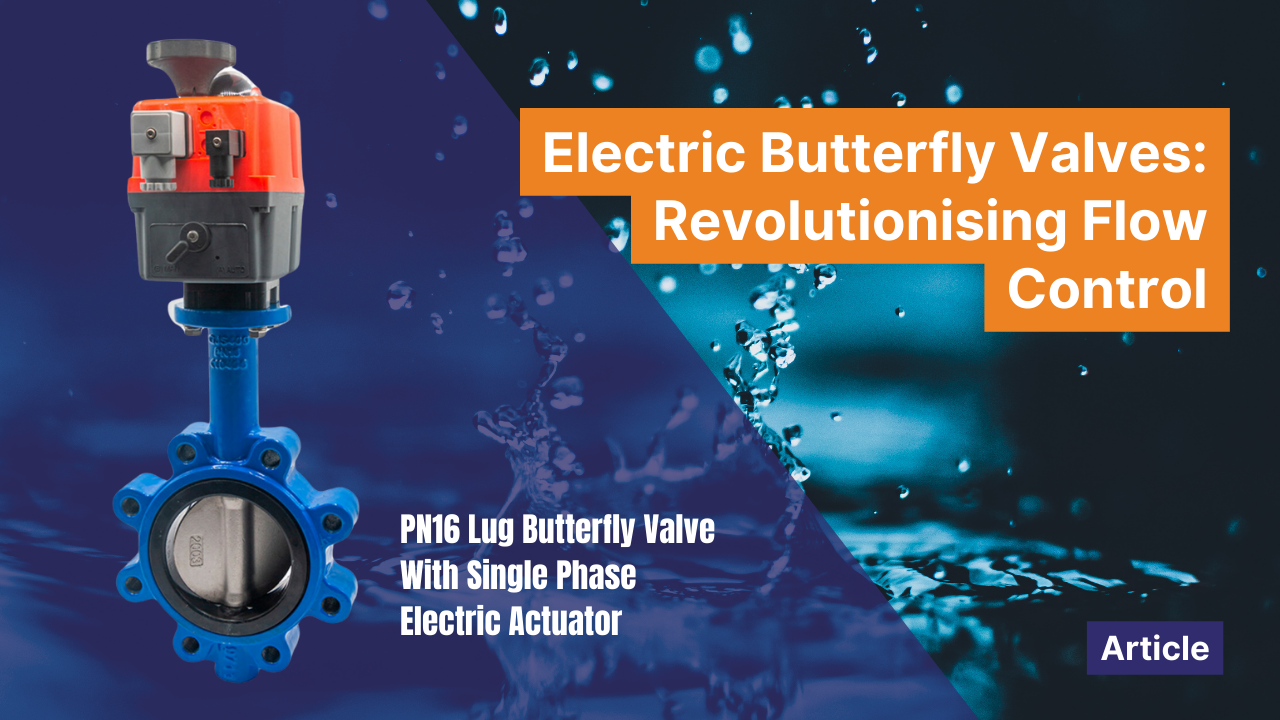
Electric Butterfly Valves: Revolutionising Flow Control
In the world of fluid dynamics and industrial processes, precise control over the flow of liquids and gases is crucial. Electric butterfly valves are a significant advancement in this domain. These devices offer a blend of efficiency, reliability, and automation, making them indispensable in various industries. Unlike manual valves, electric butterfly valves leverage electric actuators to regulate flow, ensuring precision and ease of operation.
Electric butterfly valves consist of a disk that rotates around a central axis to control the flow through a pipe. The disk is connected to an electric actuator, which automates the opening and closing process. This automation enhances operational efficiency and minimises human intervention, reducing the risk of errors and increasing safety.
Advantages of Electric Butterfly Valves
One of the primary benefits of electric butterfly valves is their efficiency. These valves can be operated remotely, allowing for seamless integration into automated systems. This remote operation capability is particularly beneficial in large-scale industrial setups where manual valve control would be impractical and time-consuming.
Additionally, electric butterfly valves offer excellent control precision. The electric actuators can be programmed to achieve specific flow rates, ensuring that the system operates within the desired parameters. This level of control is critical in processes where maintaining consistent flow rates is essential for product quality and system stability.
Applications in Various Industries
Electric butterfly valves are versatile and have applications across numerous industries. In the water treatment industry, they regulate the flow of water through treatment plants, ensuring that the water is processed efficiently and effectively. The precise control offered by electric butterfly valves helps maintain the delicate balance required for optimal water treatment.
In the chemical and petrochemical industries, electric butterfly valves are essential for handling various chemicals and gases. The ability to control the flow accurately helps in preventing leaks and ensuring the safety of the operations. These valves are designed to withstand harsh chemical environments, making them ideal for such applications.
Installation and Maintenance
Installing electric butterfly valves is a straightforward process. The valves are designed for easy integration into existing piping systems, and the electric actuators come with detailed installation instructions.
Maintenance of electric butterfly valves is minimal compared to their manual counterparts. The electric actuators are designed for durability and require little upkeep. Regular inspections and occasional lubrication of the moving parts are usually sufficient to keep the valves in good working condition. This low-maintenance requirement translates to cost savings and increased uptime for industrial operations.
Environmental and Economic Impact
Electric butterfly valves have a positive environmental impact. Their precise control capabilities help in reducing waste and minimising the release of harmful substances into the environment. For instance, in water treatment plants, these valves ensure that only the required amount of chemicals is used, reducing the potential for environmental contamination.
Economically, electric butterfly valves offer significant savings. The initial investment in these valves is offset by the reduced operational and maintenance costs. The automation capabilities of electric butterfly valves lead to improved process efficiency, reducing the need for manual intervention and associated labor costs. Additionally, the enhanced precision in flow control can lead to better product quality and reduced material wastage, further contributing to cost savings.
Future Trends and Innovations
The future of electric butterfly valves looks promising, with continuous advancements in technology driving innovation. One emerging trend is the integration of smart technologies into these valves. Smart electric butterfly valves equipped with sensors and connectivity features can provide real-time data on valve performance, enabling predictive maintenance and further enhancing operational efficiency.
Another exciting development is the use of advanced materials in the construction of electric butterfly valves. These materials offer increased durability and resistance to extreme conditions, expanding the range of applications for these valves. Innovations in actuator technology are also expected to improve the response times and precision of electric butterfly valves, making them even more reliable and efficient.
Conclusion
Electric butterfly valves represent a significant leap forward in flow control technology. Their combination of efficiency, precision, and automation makes them an ideal choice for various industrial applications. From water treatment to chemical processing, these valves provide reliable performance and contribute to both environmental sustainability and economic savings.
As technology continues to evolve, electric butterfly valves are poised to become even more integral to industrial processes. The ongoing innovations promise to enhance their capabilities, making them indispensable tools for achieving optimal flow control. Investing in electric butterfly valves is a strategic decision that can lead to improved operational efficiency, reduced costs, and a positive environmental impact.


